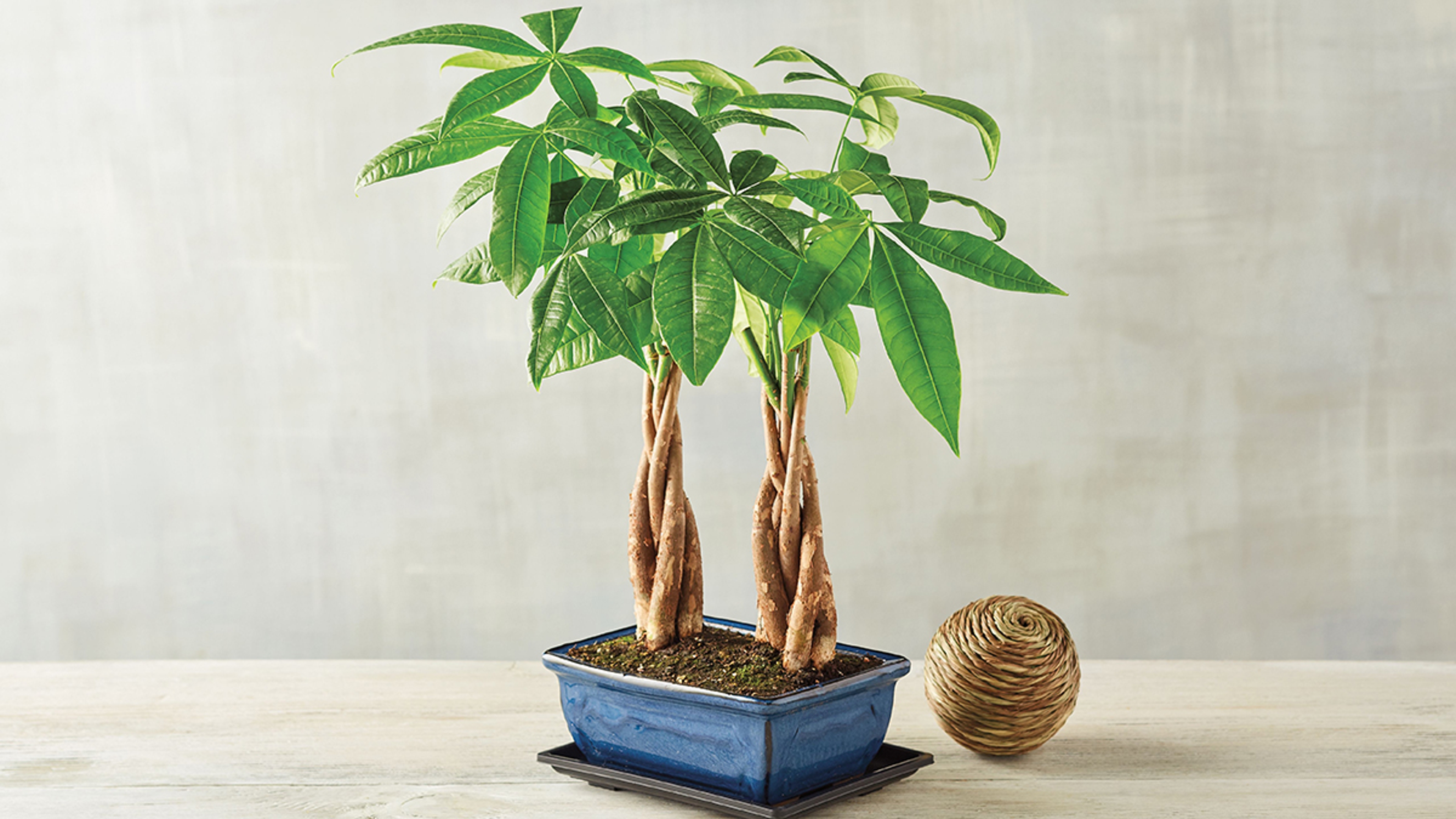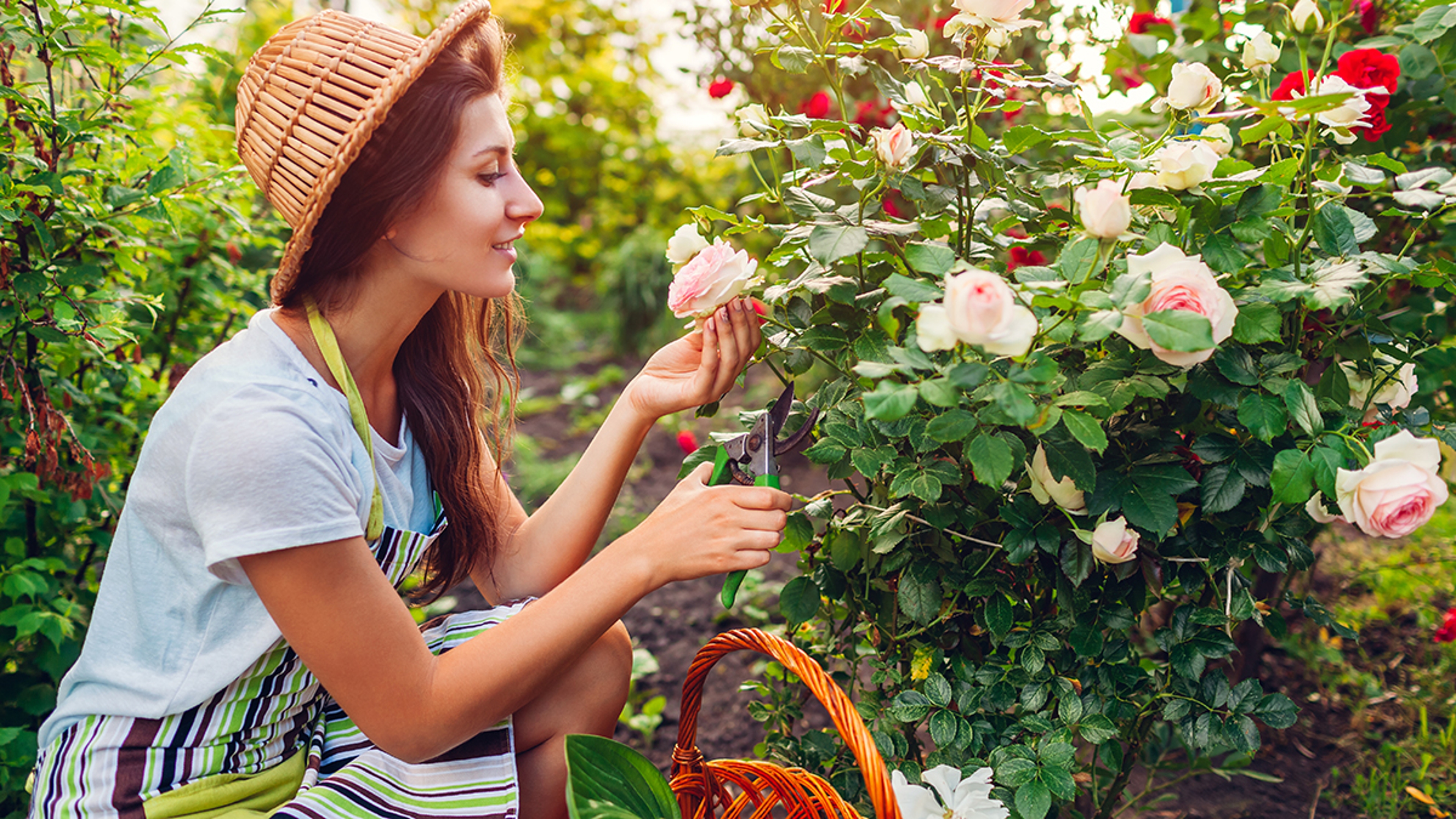7 Secrets of the Money Tree
Money does not grow on trees, but this lucky houseplant may bring you good fortune.
Jun 27, 2022
When it comes to plants that are said to bring good fortune, indoor gardeners have a lot of options. There's the shamrock, which has its moment every year on St. Patrick's Day, as well as the hardy succulent jade plant and water-dwelling bamboo. But by most accounts, the luckiest plant you can add to your houseplant menagerie — and the best for growers of any skill level — might just be the money tree. Want to know more? Here's an assortment of seven lucky facts every plant lover should know about this charming houseplant essential.
Family matters
A member of the Malvaceae plant family — and cousin to plants as diverse as cacao, cotton, hibiscus, and okra — the Pachira aquatica (as it is known in Latin) has a variety of nicknames, including the Malabar chestnut, Guiana chestnut, French peanut, Saba nut, and Monguba. Whatever you call it, you'd be hard pressed to find a better or more forgiving type of greenery with which to share your home, says Claire Akin, creator of the Houseplant Resource Center.
Money trees are an ideal houseplant for many reasons, Akin says: They're pet friendly, low maintenance, don't require a ton of light, and somewhat forgiving if you're the type who doesn't always remember to water your plants as often as you should.

Best of all, they're incredibly striking, with thick, bark-like, generally braided stems and lush and vibrant glossy green leaves that have a distinct tropical vibe, similar to a palm tree.
Luck be a tree
Although money doesn't grow on trees, money trees are treasured for their supposed ability to channel good luck into a home. They are thought to be a harbinger of good luck, positive energy, and financial success, says Nikole Washington Nelson, floral merchandiser for Harry & David.
A staple in feng shui, the money tree's unique structure is believed by followers of the ancient Chinese traditional practice to perfectly encapsulate the five distinct elements that make up the universe: water, wood, fire, earth, and metal.
Placing a money tree plant in an area where you deal with money, such as a business or home office, is thought to summon that good luck and good fortune. And, to make the plant's supposed powers even stronger, money trees are also often adorned with additional luck-bringing symbols, such as coins and red ribbons.
Keeping your money tree healthy
“The secret to a happy money tree is to give it the conditions it wants — or at least as close to them as you can provide," according to Justin Hancock, a horticulturist with Miami-based plant nursery Costa Farms, which specializes in growing more than 1,500 different varieties of houseplants. Those conditions break down to as much indirect sunlight as you can provide; natural or artificial light are both fine.
“Ideally, keep your plant within three feet or so of an east- or west-facing window," Hancock advises. He also recommends giving your plant slow release fertilizer a couple times a year and plenty of water: Let the top couple inches of your money tree's soil dry out in between waterings — roughly once a week — and then add water to the soil until it starts to drain out the bottom of your pot. When done, empty the drainage tray immediately so the plant's roots aren't left standing in excess liquid.
Watch out, too, for anything that creates hot or cold drafts, such as old windows or heating, or air-conditioning vents, he adds. “Blasts of air that are noticeably hotter or colder than the ambient air temperature can cause the leaves to go yellow or brown and drop."
In the wild, the money tree can grow up to 60 feet tall. However, indoor plants usually top out at three to six feet.
“With good care, you can enjoy a money tree in your home for years, or even decades," Hancock adds.
A globe-traveling history
Although money trees are originally native to the swampy wetlands of Guyana and Central and South America, the tropical aquatic is also widely grown in Japan and East Asia. And that's where its popularity truly exploded.
“As the story is commonly told, it was a Taiwanese truck driver who first cultivated the plant and helped it become so popular," says Andrew Bunting, vice president of horticulture with the Pennsylvania Horticultural Society.
Although the legend of the money tree may sound like something that dates back centuries, its cultivation really only goes back to the 1980s, Bunting adds.
As its popularity increased, he says, growers began braiding several individual seedlings together when the plants were very young. Then, as the plants grew, their stems would fuse together and become one.
“It is thought that good fortune can be trapped within the braided folds of those trunks," he says.
Did somebody say bonsai?
Although the term “bonsai" generally conjures up images of tiny, immaculately trimmed evergreens, money trees are also an unusually popular plant choice for the practice of bonsai.
“Bonsai plants can vary greatly," Bunting says. “Most of us are used to seeing more temperate plants used in the practice of maintaining these tiny trees in a small and artful manner. However, many tropical plants like the money tree work exceptionally well and offer a unique spin on this traditional art practice."
Put your money tree where you mouth is
Although it's rarely considered “food," the money tree's relationship to vegetables, such as okra, and fruits, such as cacao (which is where we ultimately get chocolate from), means that the plant can actually be eaten.
“Though you almost never see them indoors, the money tree can develop really beautiful and interesting flowers," Hancock says. The large yellow-ish white blooms open at night, are incredibly fragrant, and sport hundreds of feathery red-tipped stamens.
“Surprisingly," he adds, "they're generally pollinated by bats."
The pollinated fruit grows in a pod and bursts open when ripe, exposing dozens of large, reddish-brown seeds. The nutty-tasting seeds can be eaten raw or cooked and are also commonly ground into flour. Young leaves from the plant can also be eaten, as can the flowers themselves — although we'd recommend you spend your time admiring and caring for your money tree rather than sautéing it!








